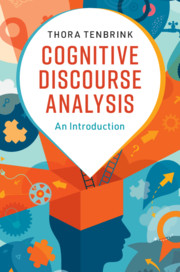Book contents
- Cognitive Discourse Analysis
- Cognitive Discourse Analysis
- Copyright page
- Contents
- Figures
- Tables
- Preface
- Acknowledgements
- Introduction
- 1 Background and Scope
- 2 Language as a Representation of Thought
- 3 Resources
- 4 Identifying Cognitive Orientation
- 5 Identifying Cognitive Depth
- 6 Identifying Cognitive Constructiveness
- 7 Using Language to Convey Thoughts
- 8 CODA Procedures
- 9 Beyond CODA
- Register of Linguistic Features
- References
- Index
5 - Identifying Cognitive Depth
Published online by Cambridge University Press: 23 January 2020
- Cognitive Discourse Analysis
- Cognitive Discourse Analysis
- Copyright page
- Contents
- Figures
- Tables
- Preface
- Acknowledgements
- Introduction
- 1 Background and Scope
- 2 Language as a Representation of Thought
- 3 Resources
- 4 Identifying Cognitive Orientation
- 5 Identifying Cognitive Depth
- 6 Identifying Cognitive Constructiveness
- 7 Using Language to Convey Thoughts
- 8 CODA Procedures
- 9 Beyond CODA
- Register of Linguistic Features
- References
- Index
Summary
Chapter 5 turns to cognitive depth, another aspect of our thinking that is regularly reflected in the way we formulate our thoughts. On the one hand, we can think things through, and formulate them in language, in much detail, or we can remain on the surface, sticking to the mere essentials. A focus on granularity patterns in linguistic analysis therefore provides insights into the speaker’s conceptualisations relative to a situation context, aspects attended to in depth, and diversity between individuals and types of situations. On the other hand, we can be more or less certain about what we describe, reflecting our expertise or the uncertainty of the subject matter itself. Variability in certainty adds a dimension of reliability to the speaker’s contribution, which is decisive for assessing the status of relevant concepts. Both aspects, granularity and certainty, work together, as experts will often be able to look into things in much more depth than novices – but on the other hand they don’t always need to, as they quickly recognise patterns that they’ve come across before.
Keywords
- Type
- Chapter
- Information
- Cognitive Discourse AnalysisAn Introduction, pp. 117 - 141Publisher: Cambridge University PressPrint publication year: 2020



